When I began blogging about Walk the Region a couple weeks ago, I was pretty honest about my revulsion towards places like Laval and the Dix30, although I have really only glimpsed them from the highway side.
But say what you will about the burbs’ environmental footprint and their potential for social mixity, on the ground some suburban forms were impossible to hate: take the sturdy bungalows in Vieux Longueil that still seemed to glow with 1950s optimism or the lakeside cottages in Oka and Beloeil crawling with vines and wrapped in flower gardens and shaded with tall old trees. Other forms, like the clusters of impersonal condos and strip malls by the highway side, or the rows of massive single-family dwellings that knocked shoulders on treeless cul-de-sacs in Laval would be hard to love.
In short, through Walk the Region I discovered that there are suburbs I can understand and suburbs that I cannot understand. Some suburban landscapes, especially those that began as villages or as cottage country, were rich living spaces. Others were stark and impersonal: their raison-d’être seemed nothing more than the product of down-payment vs commute-time.
Sainte-Marthe-sur-le-Lac in particular was fascinating as the bike path wound us through old cottage country, then wooded lots, and then a lake surrounded by campsites, followed by more woodland and finally a flashy water park where techno beats blared around a huge inflatable can of Coors light. All the while, over my left shoulder, I could feel the new condo developments closing in, filling the gap between the highway and the riverside, invading the fields that once would have made suburbanites believe they were living in countryside (see the image above). Perhaps, in a few decades’ time the new developments will begin to feel less impersonal. On the other hand, I wonder how many decades some of these units will even last…
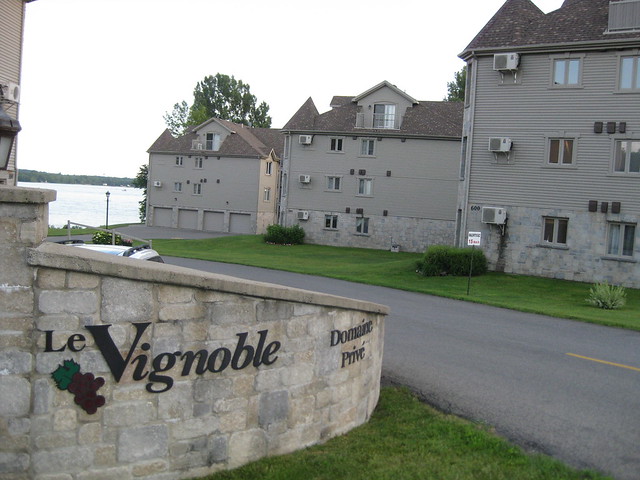
The thing that alarmed me most was that, invariably, the denser residential developments and the commercial segments, where the most unpleasant and uninspiring forms we crossed. Of course when we advocate for proximity shops and services we may not have Tim Hortons’ and the strip mall in mind. But this is the reality of how our prescriptions are playing out.
While there were plenty of commerces within walking distance of new developments in Sainte-Dorothée (Laval), perhaps required by an enlightened city planner, the nail salons, tattoo parlours, jewelers, and martial-arts studios that set up shop in the commercial spaces hardly offer much day-to-day subsistence. Planning regulations haven’t succeeded in overcoming a groceries-at-Club-Price-on-the-weekend way of life.
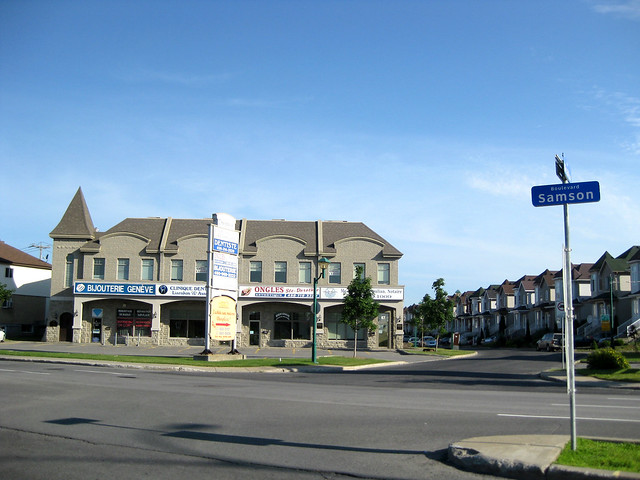
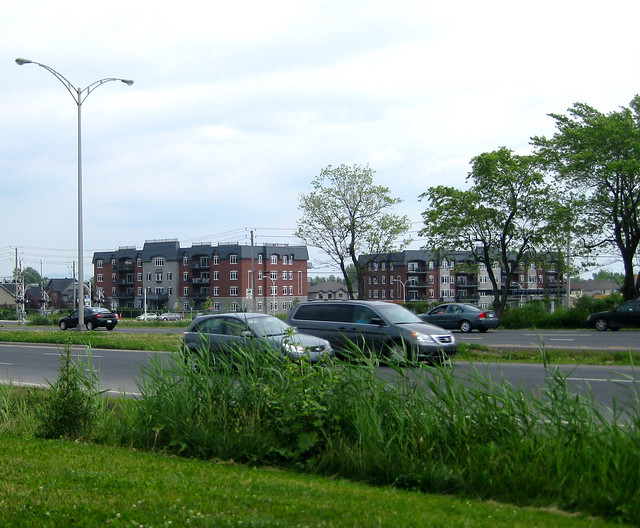
An inside-out landscape
Walk the Region took us from farmland through to some of the densest neighbourhoods in Montreal, like Rosemont and the Plateau, and yet we never experienced a jarring moment where we felt plunged into a brand new landscape. In fact, the suburbs often had as much diversity of form as the city, as my co-walker Joel eloquently describes here.
Slowly, almost imperceptibly over the course of two days, our surroundings turned inside-out: the built environment gained ground, and then fully encompassed the green space.

Late on the second day or our walk, I lingered on the Jacques-Cartier bridge basking in the view of Montreal. What is it, I wondered, that I find so captivating about this city? Given our experience in the suburbs, it would be too simple to answer that it’s density, or even diversity that makes the city pulse.
Rather, it is the intricacy of a thousand intentions woven together, in which each stitch has been negotiated and is being re-negotiated own place and time. It is sort of miraculous that this unfinished tapestry without a patter can none-the-less feel like something complete.
And it is even intimacy: to behold so much of what I know and love, interlaced with so many yet-unknowns, all in a single frame.
So forget about those threadbare prescriptions for density and proximity: how can we create places with intricacy and intimacy? I don’t have a recipe, but I think the ingredients are time and flexibility, care and maybe even a pinch of conflict… For those who want a slightly firmer answer, Joel has some thoughts on how we can build suburbs differently over at www.avenuehuit.org

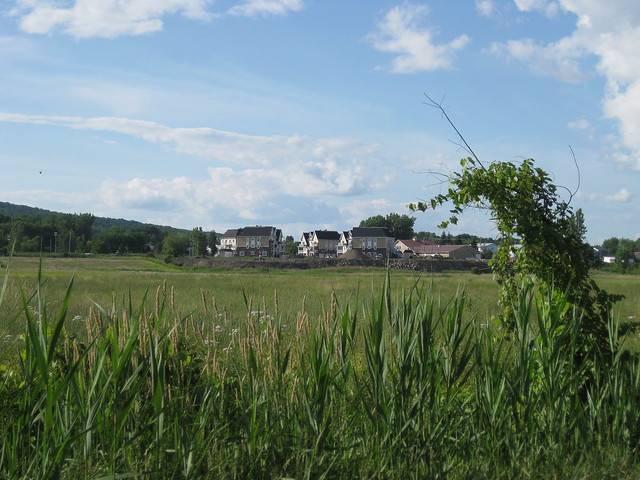
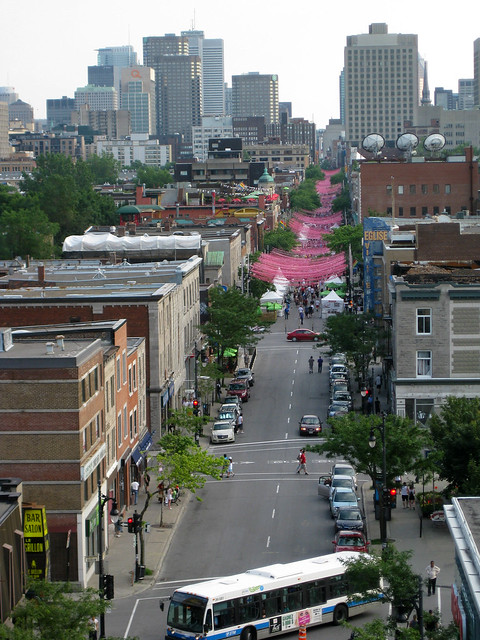
4 comments
I suspect that’s supposed to be a “martial-arts studio”, as interesting as “marital arts”sounds…
“Rather, it is the intricacy of a thousand intentions woven together, in which each stitch has been negotiated and is being re-negotiated own place and time. It is sort of miraculous that this unfinished tapestry without a patter can none-the-less feel like somethign complete.”
Beautiful sentiment!
The intimacy of a thousand intentions………..that is a great description of FREEDOM. When people step back from the idea of orchestrating society, when they cease to put a bunch of super smart guys in charge of everything we do, everything we eat, everything we build……..that is when you get PEOPLE managing their own lives and creating and managing their own little spots of the city. And that is when you get the intimacy of a thousand intentions.
Out with city planning. In with Freedom. It is what makes life rich.
Fascinating perspective on the Ville de Montréal – and beautuful writing!